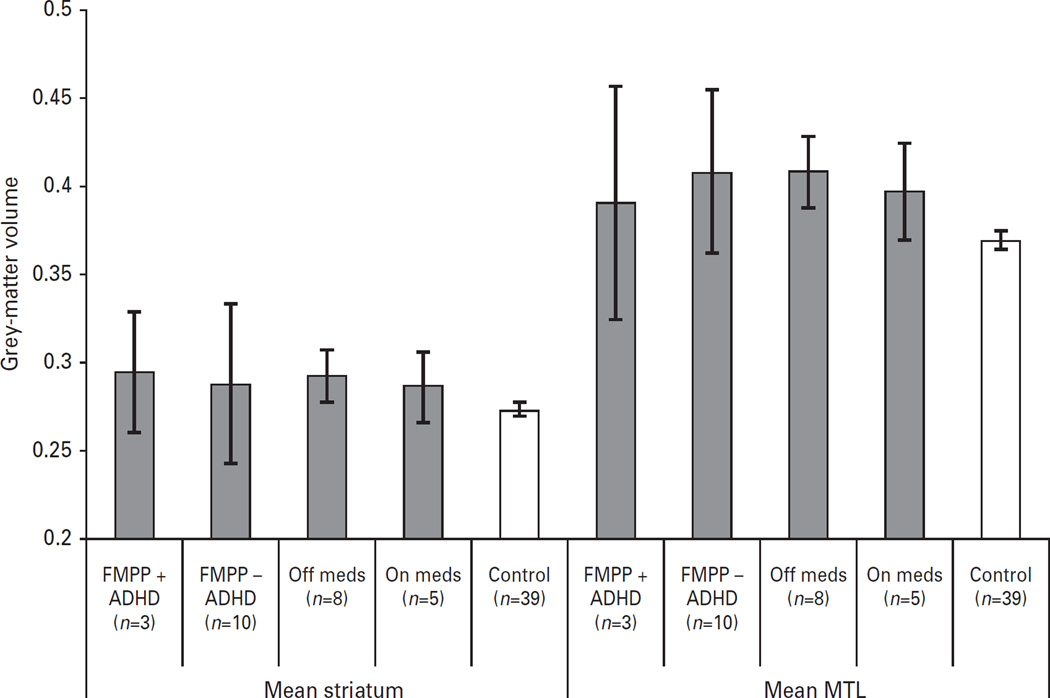Fig. 4.
Mean volumes of striatum and medial temporal lobe in the control group and the familial male precocious puberty (FMPP) group are presented segregated along two factors : the presence (n = 3) or absence (n = 10) of ADHD, and the medication status (n = 5 on, and n = 8 off). This graph indicates that the group differences between FMPP and controls were not driven by diagnostic or medication status. Error bars denote s.e.m.

